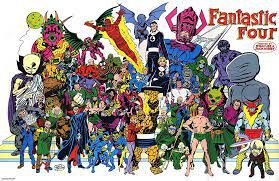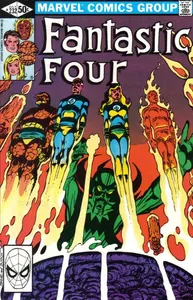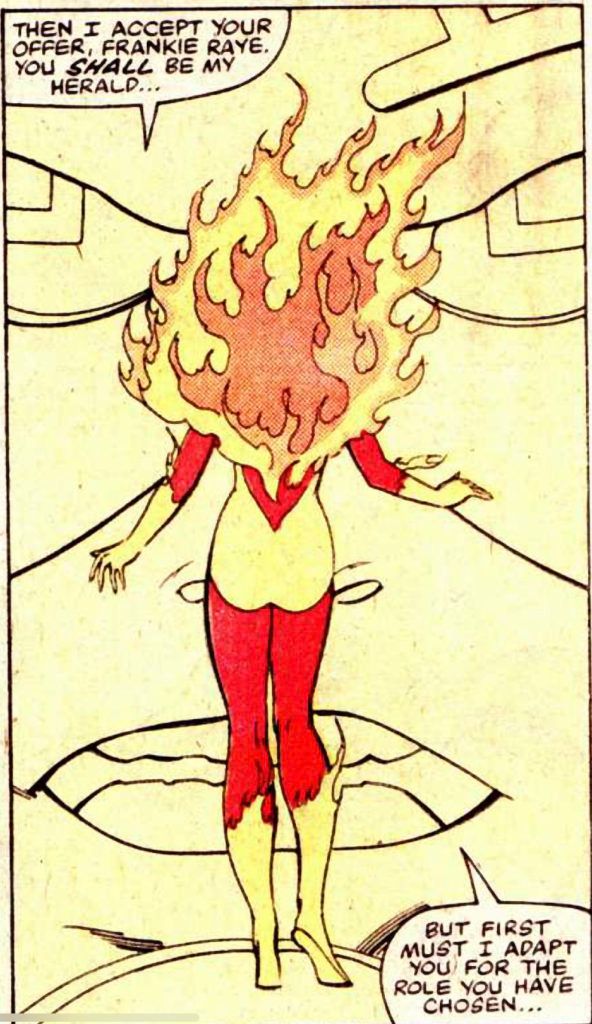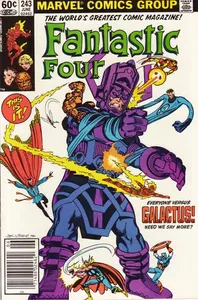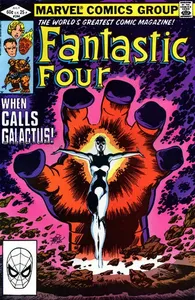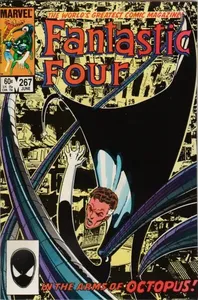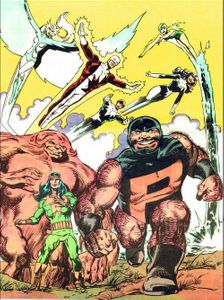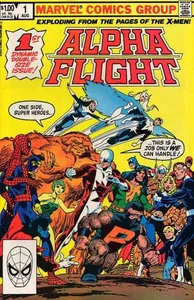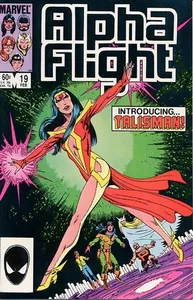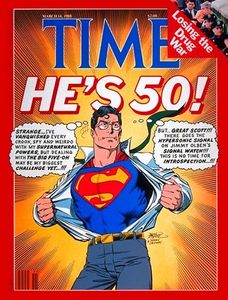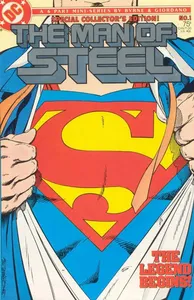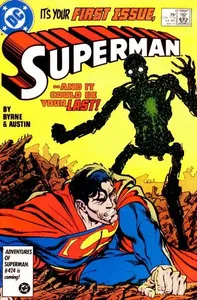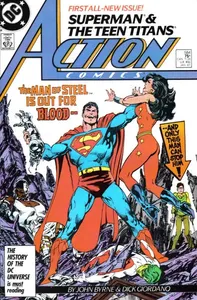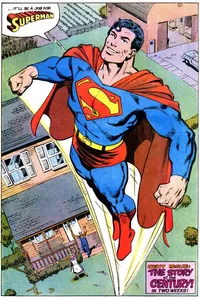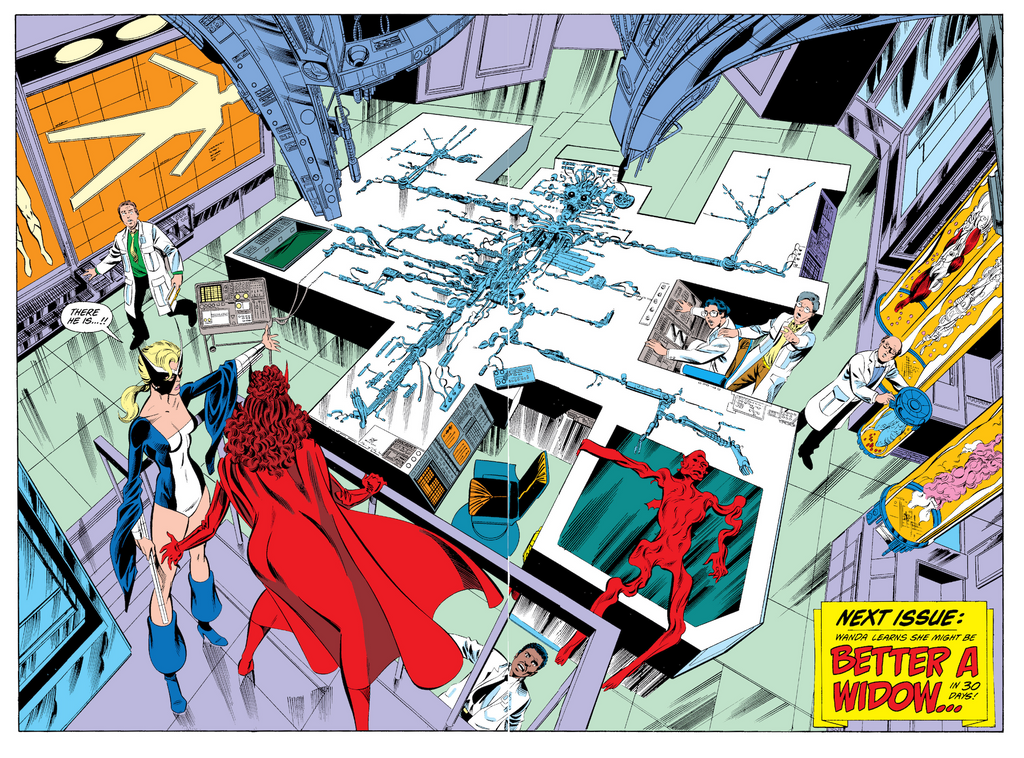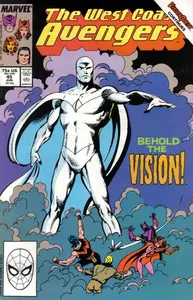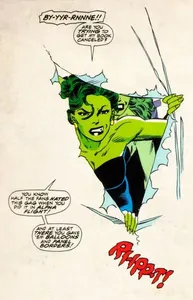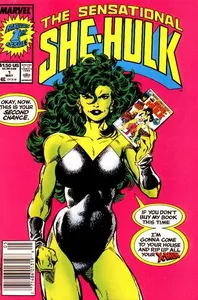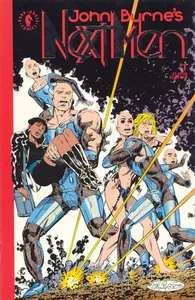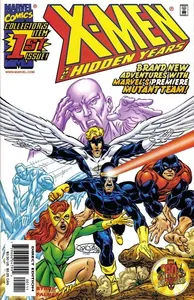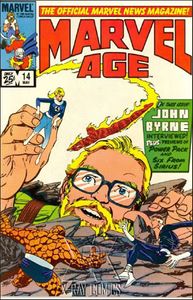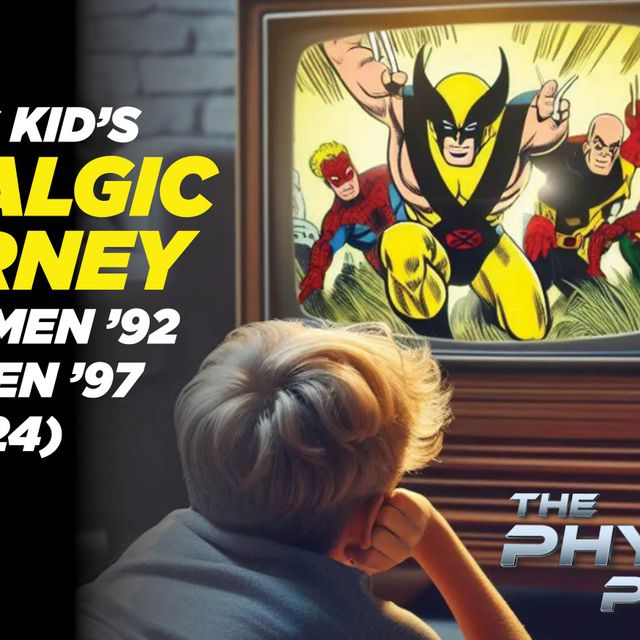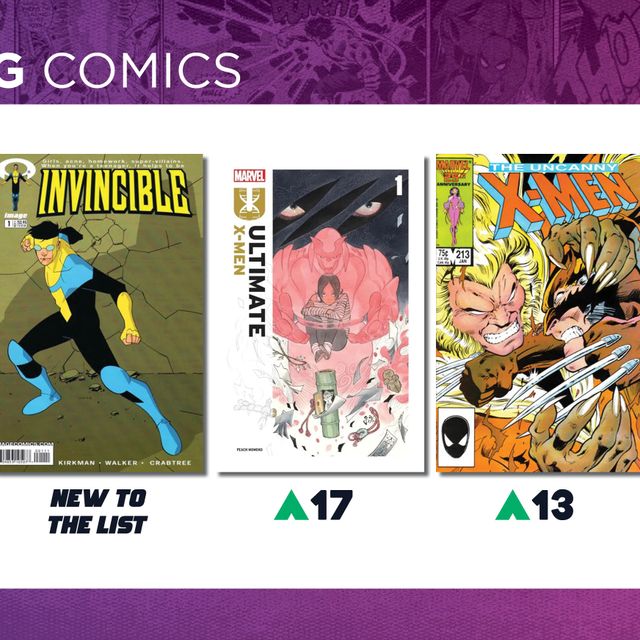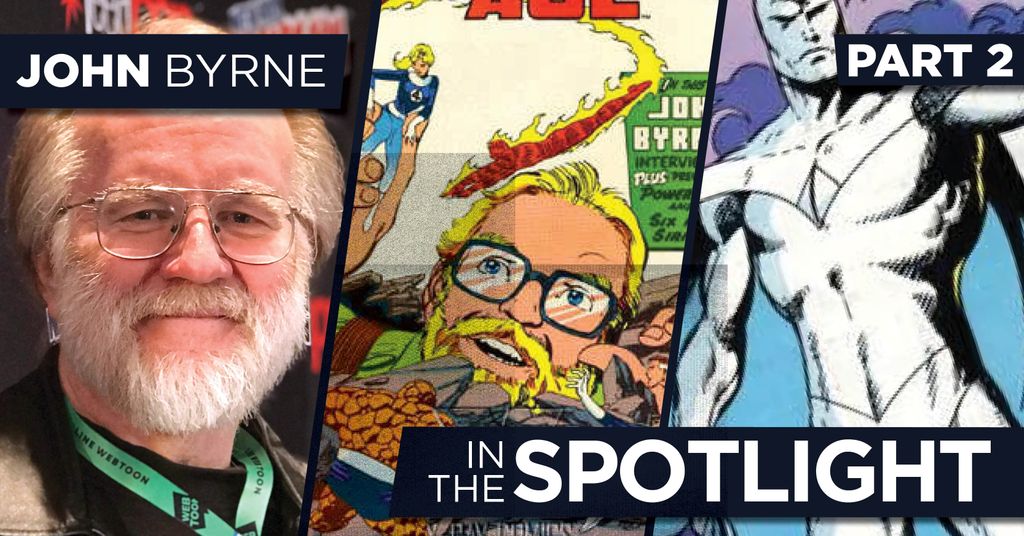
Fantastic Four and a Confession
When John Byrne took over writing and art duties beginning with Fantastic Four #232 in 1981 no one really knew what we were going to get. What we got was nothing short of amazing. It was a renaissance, a revival of the team that harkened back to the Lee/Kirby years yet was also fully modern.
Full confession here: I’m a huge Fantastic Four fan, and at the time Byrne started on the Fantastic Four I was in my early teens and fully immersed in the world of comics. For me, at that time, FF was the best book on the shelves, so forgive me as my nostalgia likely colors my review of this run. I promise I won’t let it get in the way of pointing out the key issues.
There are 554 graded copies of Fantastic Four #232 in the CGC census, and it’s a very affordable comic, although it’s beginning to shoot up again in the 9.8 grade. On February 27, a 9.8 sold in an eBay auction for $81, only to be followed later in the day by a $114 sale in a Heritage auction.
An eBay auction on March 9 brought the price all the way up to $324. I think that’s a little high but a good sign that this comic is starting to rebound. I would not at all be surprised if sales in the near future are in the $150 to $175 range.
Byrne’s Galactus Trilogy
Likely the peak of Byrne’s tenure on Fantastic Four was Fantastic Four #242 through Fantastic Four #244, a trilogy that featured Galactus, Terrax, Doctor Strange, Spider-Man, Daredevil, a smattering of Avengers, and, at the end of the tale, Frankie Raye becoming Nova, herald of Galactus. Epic in scope and filled with guest stars galore, it’s regarded by many as the second best Galactus story after the original. The story also humanized Galactus in a way that had never been done before.
All three issues in the trilogy are worth consideration for a collection. Fantastic Four #243 has one of the best covers of Byrne’s career. There are 777 graded copies. This is one that really shot up in the 2021-2022 back issue boom, reaching as high as a slashed $635 for a 9.8 in July 2022.
Recent sales include a $216 sale in an April 4 Heritage auction and $214 in an April 16 eBay auction. Both are roughly in line with prices prior to the boom, so, while it has lost all its gains over the past couple years, it hasn’t dipped down to 2019 prices.
Frankie Ray’s first appearance as Nova in Fantastic Four #244 has fared about the same. The most recent sale of a 9.8 was for $316 in an April 8 eBay auction. That’s a big tumble from its peak of a slashed $1,500 set twice in August 2021. Again, the new level is roughly in line with prices prior to the boom.
In all, Byrne would last for five years on Fantastic Four, and there are a number of amazing issues. Others to consider for your collection (or to read) include Fantastic Four #236 – the team’s 20th anniversary issue, Fantastic Four #250 with Gladiator and a bunch of Skrulls posing as the X-Men, Fantastic Four #257 – wherein Galactus devours the Skrull home world, Fantastic Four #267 – a heartbreaking emotional issue, Fantastic Four #273 – the first full appearance of Reed Richards’ father, Nathaniel, and ancestor of Kang, and Fantastic Four #284 – the issue where Sue finally becomes the Invisible Woman.
Alpha Flight Series
After much pressure from fans and Marvel management, Byrne finally created an Alpha Flight series. While not Byrne’s greatest work, collectors tend to gravitate toward two issues. The first is, naturally, Alpha Flight #1.
Besides being the first issue, it’s also the first appearance of Puck, arguably the most enduring of all the Alpha Flight members. Other first appearances in the issue include Marrina, Wild Child, Madison Jeffries, and Tundra.
There are 4,128 graded copies of Alpha Flight #1 in the CGC census. This is a book that languished in the $100 range for a 9.8 until 2020, when MCU rumors began to heat up. It shot up to $180 at the time and then really exploded during the boom, reaching as high as a slashed $1,297.
Since then, it’s come back down to Earth, with a current 30-day average of $154. This is a comic that lives and dies almost solely based on MCU rumors. My suggestion is to buy low when the rumor mill has ground to a halt, such as now.
The other issue that some collectors consider is Alpha Flight #19, the first appearance of Talisman, the daughter of original Alpha Flight member Shaman. This has been more of a raw play, with only 129 graded copies as evidence that speculation on this character hasn’t yet reached the slabbed end of the market. Again, this issue goes up when MCU Alpha Flight rumors are rampant and then crashes when they go away.
The current 30-day average sales price is $61, which is about as low as this book has ever been.
Superman
In late 1985, Byrne did the unthinkable and said “yes” to DC’s offer to give him the reins of Superman, just in time for the first superhero's fiftieth anniversary. Byrne’s initial plan was to continue on Fantastic Four while working on Superman. Unfortunately, Jim Shooter had other plans and fired Byrne from all work for Marvel, including from The Incredible Hulk, which he had started six issues prior.
Byrne’s first work on Superman was The Man of Steel #1, the start of a six-issue mini-series that streamlined and modernized Superman, removing the baggage that had made the character, frankly, boring throughout the 1960s and 1970s.
The first comic purposely given a variant cover, there are 833 graded copies total (both covers) in the CGC census. Collectors tend to prefer the edition sold only in comic stores, the one pictured above.
That cover sells for a current 30-day average of $136, while the newsstand edition (which was also sold in comics shops) has a current 90-day average of $115.
The first issue of the new ongoing Superman title, Superman #1 was published immediately following the mini-series. It’s never been a big one for collectors: the current 30-day average for a 9.8 is $95.
Some of Byrne’s best work on Superman occurred in the pages of Action Comics, which had become a Superman team-up book. The first issue in Byrne’s run – Action Comics #584 - teams Superman with DC’s biggest superhero team at the time, the New Teen Titans. Collectors have paid this comic little heed to their own detriment.
It’s a great issue, even though only 69 copies have been graded so far. The current 30-day average for a 9.8 is a low $83. Byrne had Superman team with a number of lower-tier DC characters during his run. His final issue was the 50th Anniversary Action Comics #600.
Byrne’s tenure on Superman would only last two years. What started with a great deal of fanfare – a modernized Superman with a fresh start – ended with a whimper as long-time DC fans lamented a Superman without Supergirl, Superboy, Krypto, the Fortress of Solitude, and the rest. They saw it as the worst possible betrayal – the Marvelization of Superman.
Much of Byrne’s streamlining of Superman has been whittled away in the ensuing 40 years. However, two pieces remain as his legacy on the character: Krypton as a cold and sterile tech world, and Lex Luthor as a wealthy and coldblooded financier and inventor.
Return to Marvel
In 1989, Byrne returned to Marvel beginning first with West Coast Avengers #42. He would stay on the series for about a year, producing a storyline that first dismantled the Vision and then saw the Scarlet Witch go insane, the start of a trend that would be used many times over at Marvel.
Of course, the issue most well-known to comic collectors from this run is West Coast Avengers #45, the debut of the white Vision and the comic that, for good or bad, started the comic boom that began in 2021.
There are 2,215 graded copies of West Coast Avengers #45 in the CGC census. The most recent sale of a 9.8 was in an April 29 eBay auction that saw the final price at $213. It’s been a huge, well-recorded fall for this book since it hit $1,500 in late February 2021.
While the comic has deservedly dropped in value and serves as a lesson to a number of buyers, it’s definitely a worthy read. In fact, Byrne’s run on West Coast Avengers is one of his better works and worth checking out.
She-Hulk
One of the characters with whom Byrne is closely associated is She-Hulk. Beginning with her membership in the Fantastic Four and continuing in Marvel Graphic Novel #18, Byrne gave She-Hulk depth that the character had previously been lacking.
Just a few months after returning to Marvel, Byrne began production on The Sensational She-Hulk #1. This series was – at the time – unique for its fourth wall breaking with She-Hulk often addressing the reader and stating her dislike for the predicaments Byrne put her in. Unfortunately, Byrne got in a tiff with editors – a not uncommon occurrence in Byrne’s career - over a She-Hulk limited series by other creators and left the series after eight issues.
The most collectible of these first eight issues is The Sensational She-Hulk #1. There are 2,339 graded copies. This is rapidly becoming a much more affordable book once more. It had shot up to a high of $554 in June 2021 but had since plummeted in value, due in no small part to the lukewarm reception to the Disney+ She-Hulk, Attorney at Law series.
You should be able to find a 9.8 now in the $120 to $130 range.
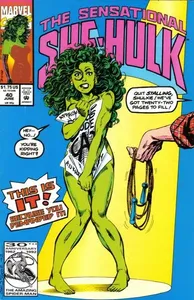
Namor, Next Men, and the Slow Fade to Obscurity
Byrne began the 1990s with first a new Sub-Mariner series beginning with Namor, the Sub-Mariner #1, and then his first creator-owned work, the Next Men, beginning in Dark Horse Presents #54. While both series are decent reads, it was clear that Byrne didn’t quite carry the same weight as he had in the 1980s.
He was part of an older generation that was being replaced by younger, more stylized artists at a time when art became everything in comics and writing was regarded as secondary.
Neither is Byrne’s best work, and the only issue of either series that is highly valued by today’s collectors is Next Men #21, and that valuation has nothing to do with the Next Men at all. The issue features the first color appearance of Hellboy in a backup story. Current 9.8 value for the issue is around $400.
While Byrne would end the 1990s and head into the 2000s with lengthy runs on Wonder Woman and Amazing Spider-Man, most of his work for the two powerhouse publishers was on lesser titles such as Blood of the Demon, retcon series such as Marvel: The Lost Generation and X-Men: Hidden Years, and Elseworlds series such as Superman and Batman: Generations.
His creator-owned work since has been lackluster, and currently his primary work is a web-only self-published take on what he would have done with the X-Men had he been able to take over following the death of Jean Grey.
Legacy
There is no question that Byrne’s work from the mid-1970s to 1990 was some of the best in comics at the time. The most memorable will likely be his artwork on X-Men/Uncanny X-Men and his five-year stellar stewardship of Fantastic Four.
As often happens with comic creators, the brightness of his star has waned over time, although new generations of collectors are regularly rediscovering his work.
Do you collect John Byrne’s works? What are some of your favorites? Let us know below.

